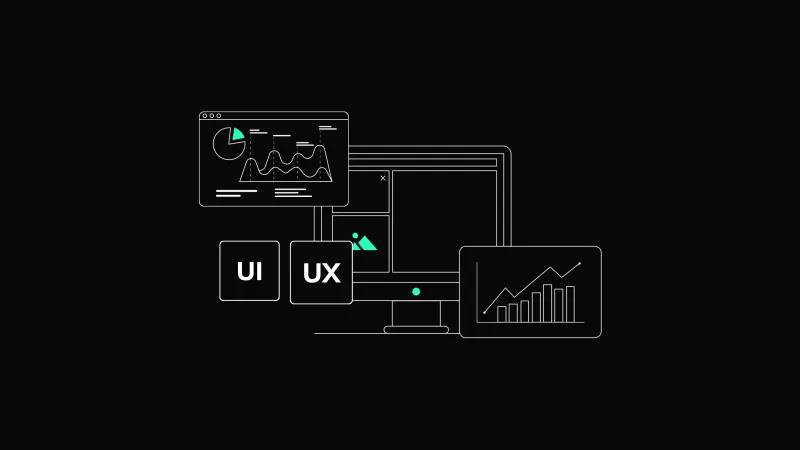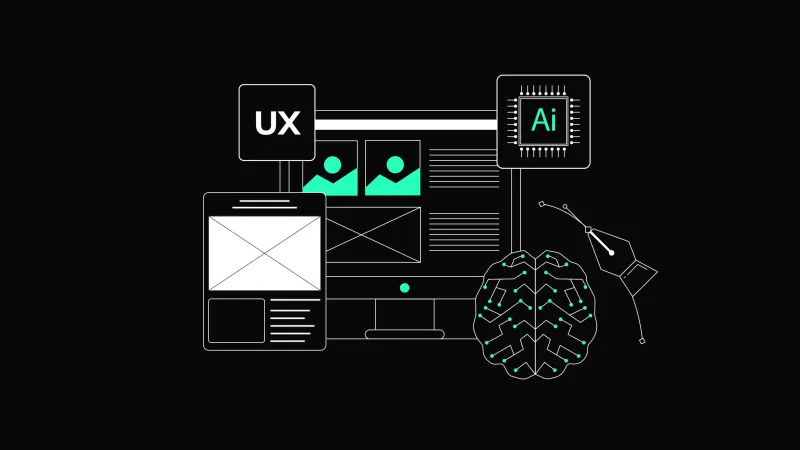UX Design for Wearables: Crafting Experiences for the Future
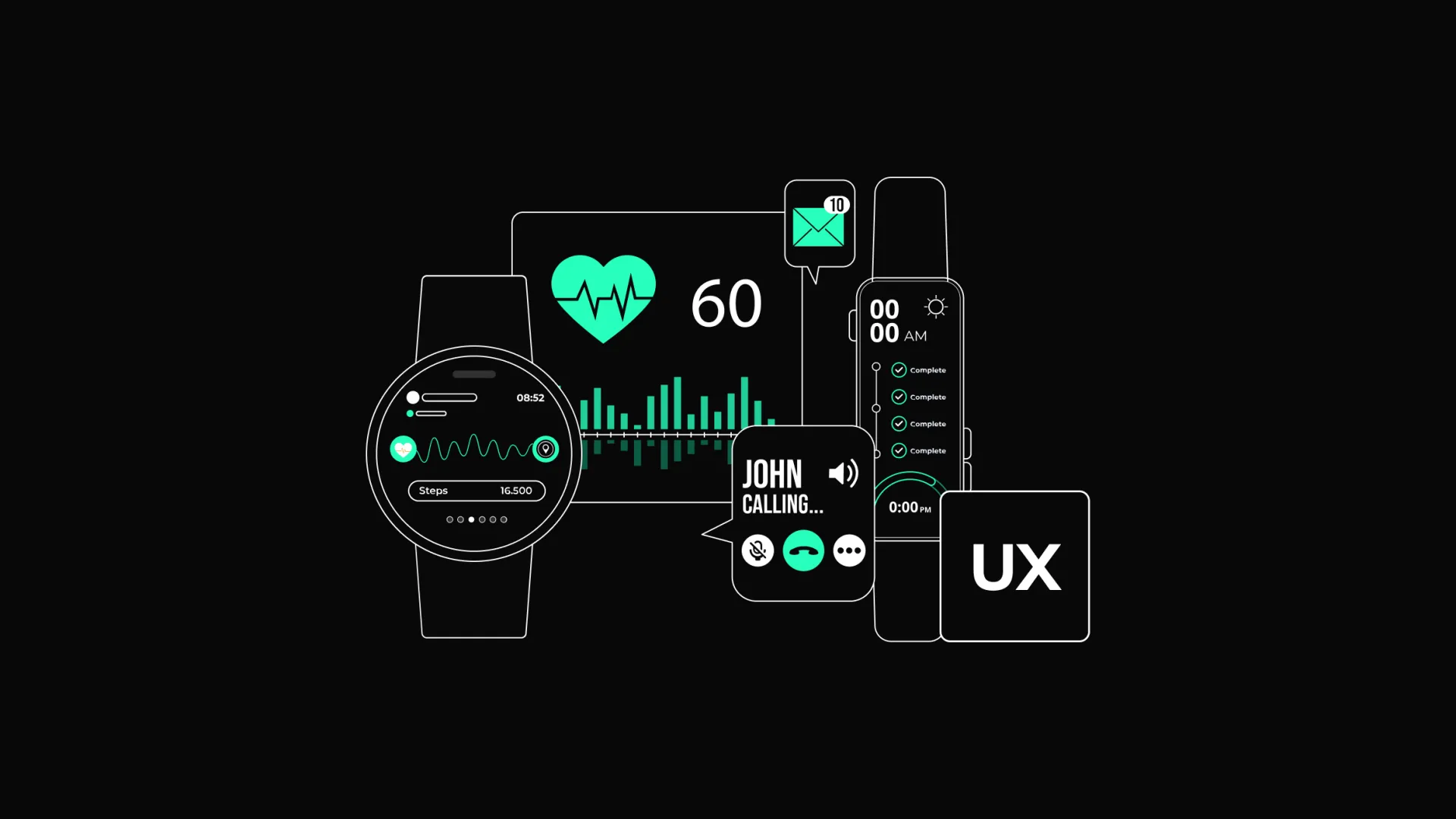
Wearable technology, such as smartwatches, fitness trackers, and AR glasses, has become essential to our daily lives. Unlike traditional devices, wearables are compact and are integrated into personal routines. Designing for wearables is a unique challenge that pushes UX designers to rethink traditional paradigms to create intuitive, efficient, and engaging user experiences.
The Unique Challenges of Designing for Wearables
Designing for wearables brings a set of challenges that go beyond traditional UX principles. Unlike smartphones or desktops, wearables demand a design approach accommodating their unique physical constraints, user contexts, and functional purposes. Addressing these challenges is essential for creating intuitive, functional, and delightful products in their users’ everyday lives.
Limited Screen Real Estate
The biggest challenge of wearables is their small screen size. Smartwatches, fitness trackers, and other devices often have screens measuring just a few centimeters, leaving little room for complex layouts or lengthy information. Designers must prioritize key functions, presenting information in small formats that are easy to consume at a glance. The solution lies in stripping away all unnecessary elements and focusing on what truly matters, using clever visual hierarchies, intuitive iconography, and collapsable menus.
For instance, a fitness tracker’s main screen might show just the step count, while more detailed metrics, like calories burned or distance covered, are accessible with a swipe. The challenge is maintaining functionality without overwhelming users.
Dynamic and Contextual Use Cases
Wearables are used in dynamic environments. For example, a smartwatch might be checked during a meeting, while running, or while cooking dinner. These situations demand a design that accommodates limited user attention.
For example, during a workout, the user may only glance at their device for a split second, so the interface must display data like heart rate in an easy-to-read manner. Designing for context means understanding when, where, and how users interact with their devices.
Power and Performance Constraints
Battery life is a major limitation for wearable devices, often lasting only a day or two without recharging. To preserve power, UX designers must carefully consider the impact of their choices, such as animations, color schemes, and background processes.
High-performance visuals or resource-heavy interactions can rapidly drain battery life. As a result, designs that incorporate minimal animations, static elements, and power-efficient colors (e.g., dark mode) are preferred. For instance, haptic feedback or subtle screen transitions can replace energy-draining animations while maintaining an engaging experience.
Input and Interaction Methods
Wearables lack traditional input mechanisms like keyboards or large touchscreens. Instead, they rely on alternative input methods such as touch gestures, physical buttons, voice commands, or even motion sensors. Designing for these methods requires creativity and a focus on simplicity.
A smartwatch might have a rotating wheel that allows users to scroll through menus without covering the screen with their fingers. Fitness trackers often incorporate swipe gestures to navigate between metrics. For voice-based commands, designers must ensure seamless integration with visual feedback so users know their command has been recognized.
Personalization and Data Sensitivity
Wearables are deeply personal devices, often tied to sensitive information such as health metrics, location data, and communication. This creates dual challenges of personalization and privacy.
Users expect their devices to adapt to their preferences, such as showing their most-used apps or highlighting specific fitness goals. At the same time, designers must ensure robust privacy protections, offering users control over what data is collected and how it’s shared. Clear privacy settings and transparent data usage policies are key to gaining user trust.
Multitasking and Notification Management
Wearables often serve as secondary devices, providing quick updates or notifications without requiring users to check their phones. However, poorly managed notifications can overwhelm users or disrupt their activities.
Designers need to create systems that prioritize notifications based on relevance and urgency. A smartwatch could use haptic feedback for a high-priority alert, like a calendar reminder, while displaying lower-priority notifications in a collapsible section. Giving users control over notification settings is crucial to prevent overloading.
Minimalist Design for Wearables: Less is More
Minimalism is not just a stylistic choice in wearable design but a functional necessity. With the small screens and specific use cases of wearable devices, minimalist design becomes essential for clear communication and ease of use. The principle of "less is more" guides designers to prioritize simplicity, usability, and focus, ensuring that every element on the screen has a meaningful purpose.
The Case for Minimalism in Wearable Interfaces
Wearables are used in quick interactions. Users typically glance at their smartwatches or fitness trackers for a few seconds, seeking immediate answers like their heart rate, step count, or notification summary. In such scenarios, cluttered designs with excessive information or decorative elements can confuse or frustrate users.
The minimalist design eliminates distractions by presenting only the most critical information, often through clean layouts, whitespace, and restrained use of colors. This ensures that users can access what they need without digging through layers of menus or struggling to interpret overly complex visuals. For example, a fitness tracker might display only the time elapsed, and the number of calories burned during a workout, with additional metrics in secondary screens.
Typography and Iconography: Prioritizing Clarity
Fonts must be easy to read at small sizes, with sans-serif typefaces often preferred for their clean and modern appearance. Designers should emphasize bold, high-contrast text to ensure visibility in various lighting conditions, such as outdoors during a run.
Icons also play a crucial role, replacing long text descriptions with universally recognizable symbols. For instance, a weather app on a smartwatch might use a simple cloud-and-sun icon to indicate partly cloudy conditions, accompanied by just the temperature in bold text. These small, meaningful visuals are easier for users to process at a glance.
Color Schemes and Contrast
Minimalism extends to the use of color. Designers often rely on limited color palettes, using just one or two accent colors to highlight key elements while the rest of the interface remains neutral. This approach creates a professional look and helps users focus on the most important information.
Contrast is especially vital. Wearable screens are often viewed in challenging environments, such as under bright sunlight or during physical activities. High-contrast designs ensure that information remains readable. Dark mode, in particular, has become popular for its combination of visual appeal and energy efficiency.
Micro-interactions and Animation
Minimalist design doesn’t mean the interface should feel lifeless. Subtle micro-interactions, like a progress bar gently filling up or a button slightly pulsing on hover, can add depth and interactivity without overwhelming the design. These animations should be purposeful, guiding the user’s attention or confirming actions.
For instance, when completing a daily activity goal, a fitness tracker might use a celebratory animation, like confetti, to reward the user without taking up additional screen space. These touches enhance the user experience while staying true to the principles of minimalism.
Designing for Glanceability
One primary goal of minimalist design for wearables is "glanceability," or the ability for users to understand the interface with a quick look. To achieve this, designers often use modular layouts, with each module dedicated to a single piece of information.
For example, a smartwatch home screen might include distinct time, step count, and weather sections, each separated by clean lines or subtle dividers. This modular approach helps users locate information instantly, even when multitasking or in motion.
Balancing Simplicity with Functionality
While minimalism focuses on simplicity, it’s crucial not to oversimplify at the expense of functionality. Wearables must still offer a full range of features without compromising usability. Designers can achieve this balance by prioritizing essential functions for quick access while pushing secondary options to menus.
A wearable banking app might show the current account balance and recent transactions on the main screen, with detailed account management tools hidden behind a swipe gesture. This approach keeps the interface uncluttered while maintaining access to deeper functionality.
Hardware and Design Synergy
Minimalist UX design should also consider the wearable hardware. Designers must adapt their design approach to fit form factors, ensuring that text, icons, and touch targets align seamlessly with the device's physical design.
For example, a round smartwatch interface might use curved text or radial menus to complement the screen’s shape, creating a cohesive user experience.
Examples of Minimalist Design in Wearables
Leading wearables demonstrate the power of minimalist design. The Apple Watch uses bold typography, simple icons, and modular watch faces to convey information quickly and elegantly. Fitbit devices prioritize glanceable metrics, such as step counts or sleep scores, with additional details accessible through intuitive swipes.
These examples highlight how minimalism can enhance usability while delivering a visually appealing and efficient user experience.
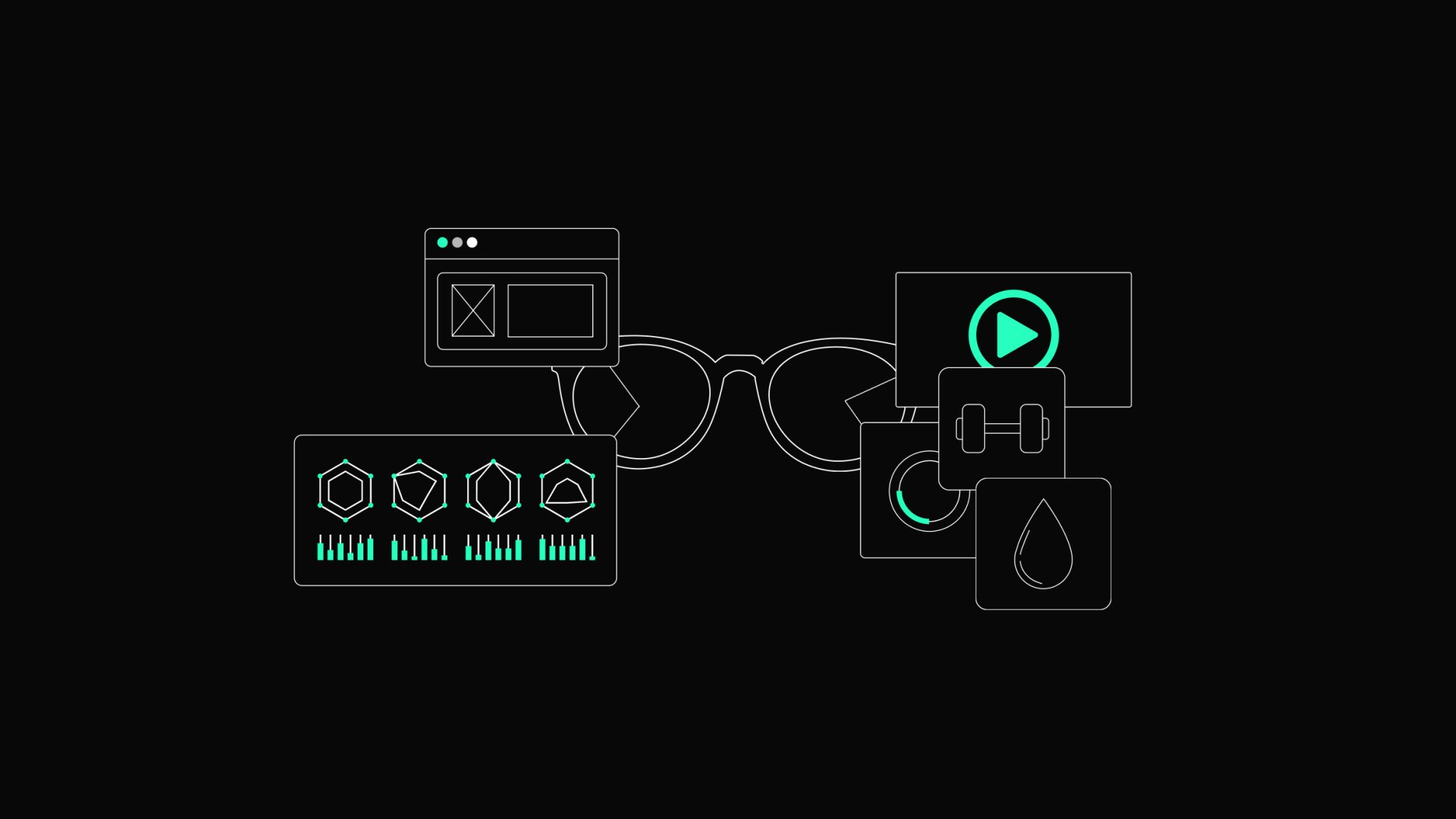
Efficient Interactions for Wearable Devices
Efficient interactions are vital for wearable devices due to their small screens and users' need for quick, frictionless engagement. Unlike smartphones or tablets, which users might spend minutes navigating, wearable devices are designed for context-aware interactions. These interactions must be intuitive, responsive, and tailored to the wearable’s unique use cases.
Prioritizing Simplicity in Interaction Design
The foundation of efficient interaction on wearables lies in simplicity. Complex navigation structures or multitap processes are counterproductive on devices with limited screen space. Designers should prioritize single-tap, swipe, or gesture-based actions that allow users to perform tasks in seconds.
For example, a fitness tracker might use a simple double-tap gesture or a single-button press instead of requiring multiple taps to start a workout session. Notifications, another key feature of wearables, should allow users to respond with a quick swipe or tap, avoiding the need to switch to their smartphones.
Context-Aware Interactions
Wearable devices thrive on context-aware functionality, which anticipates user needs based on their behavior, environment, or physical state. This reduces the cognitive load on users and minimizes unnecessary steps.
For instance, a smartwatch with GPS capabilities might automatically suggest navigation directions when it detects the user is walking or driving. Similarly, fitness trackers can prompt users to move after detecting prolonged inactivity, presenting this reminder through a subtle vibration and an on-screen message.
Gesture-Based Navigation
Gestures are a natural fit for wearable devices. They allow users to perform actions without relying on on-screen buttons, which can be challenging for small displays. Swiping, pinching, or even rotating a wheel can serve as intuitive methods for interaction.
For example, Samsung Galaxy smartwatches use a rotating bezel to navigate through apps and menus, providing a tactile, satisfying alternative to touch-based navigation. Similarly, swipe gestures are often employed to scroll through notifications, switch between fitness metrics, or dismiss alerts.
Voice Interaction for Hands-Free Use
Voice commands have emerged as a key interaction method for wearables, particularly when physical touch isn’t practical. Advanced voice recognition powered by AI allows users to perform tasks like sending messages, setting reminders, or controlling smart home devices directly through their wearable.
For example, users can say, “Set a timer for 10 minutes” to their smartwatch while cooking, freeing their hands for other tasks. The integration of natural language processing ensures that these interactions feel conversational.
Haptic Feedback for Subtle Notifications
Haptic feedback, such as vibration, is essential in wearable interactions. It enables users to receive notifications or confirmations without needing to look at their device, which is particularly useful in situations where visual or auditory alerts might go unnoticed.
For instance, a wearable can gently vibrate to signal the completion of a step goal or provide distinct patterns to differentiate between a call, message, or calendar reminder. These subtle indications allow users to stay informed without losing focus on their current activity.
Shortcuts and Predictive Actions
Efficient interactions often involve shortcuts and predictive actions that reduce the steps required to perform tasks. Wearables can foreshadow user needs and present options proactively.
For example, a smartwatch might automatically display boarding pass details when it detects the user at the airport or suggests workout routines based on their previous activity patterns. These predictive features save time and enhance the user experience by reducing the effort required to access information.
Seamless Multi-Device Integration
Wearables are rarely used in isolation. They are often part of an ecosystem that includes smartphones, tablets, and other devices. Efficient interaction design leverages this ecosystem to provide continuity and convenience.
Users might start drafting a message on their smartwatch using a quick reply option and then complete it on their smartphone for more detailed input. Similarly, wearables can be remote controls for other devices, such as using a smartwatch to control music on wireless speakers.
Design Considerations for Touch and Interaction Zones
Designing efficient touch interactions for wearables requires careful consideration of screen size and ergonomics. Buttons and touch targets must be large enough to prevent mapping and have adequate spacing to prevent accidental inputs.
For example, circular touch zones on round smartwatches should align with the natural movement of the user’s fingers. Interactive elements should be placed at the bottom of the screen to accommodate one-handed usage.
Accessibility in Wearable Interactions
Efficient interaction design must also account for accessibility, ensuring that users with diverse needs can engage with wearables. Features like adjustable font sizes, voice-controlled navigation, and haptic feedback can serve users with visual, motor, or hearing impairments.
For instance, if touch gestures are challenging, a smartwatch might allow users to navigate menus through voice commands. Similarly, wearables can provide visual indicators alongside vibrations to ensure inclusivity for users who rely on multiple sensory inputs.
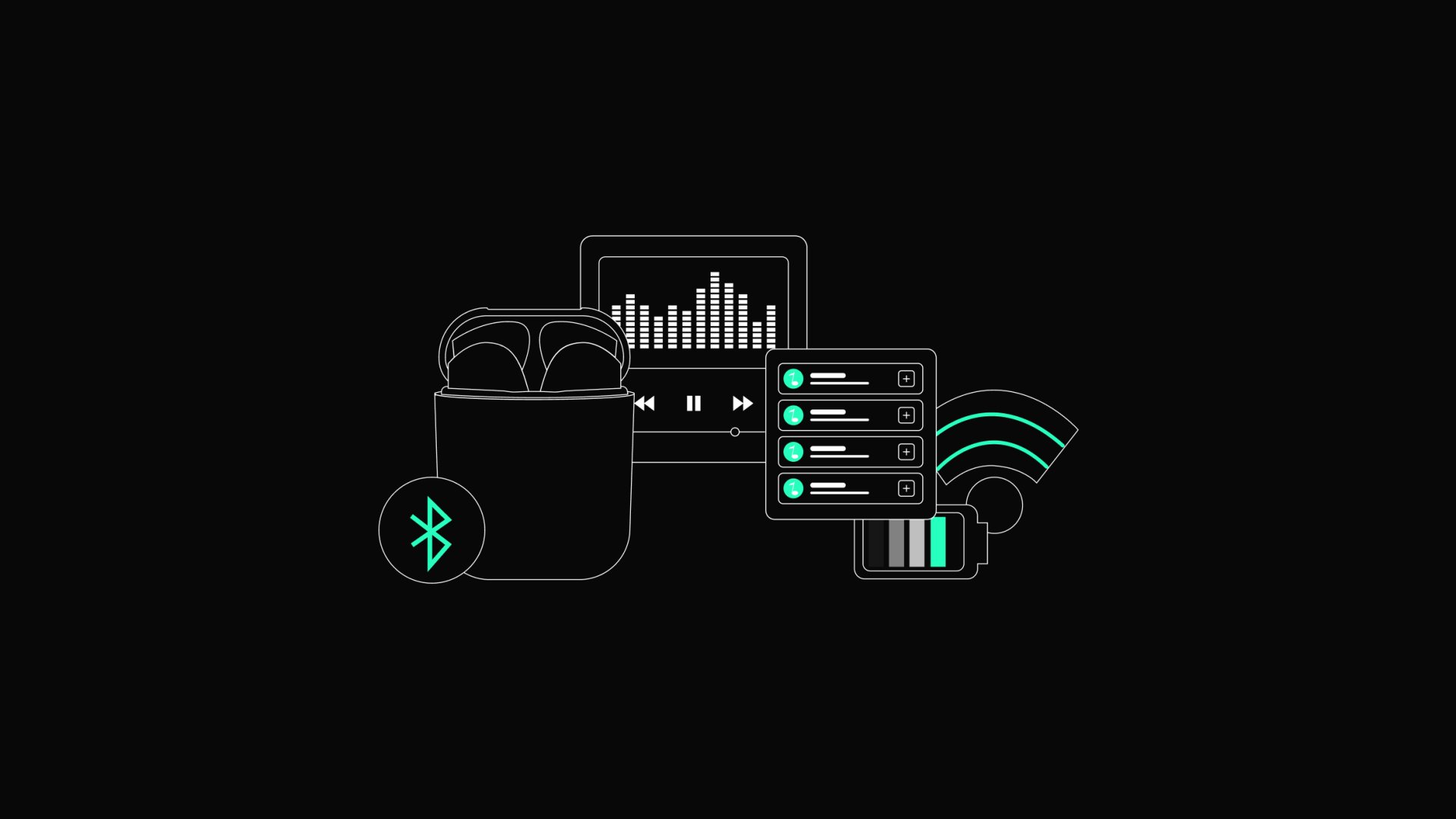
Delivering Key Information at a Glance
One of the most critical aspects of designing for wearables is ensuring that key information is delivered concisely and efficiently. With limited screen size and users often interacting with their devices in brief moments, the ability to present essential data at a glance can make or break the user experience. This principle lies at the heart of wearable UX design, demanding clarity, relevance, and immediacy in every interaction.
Context-Aware Data Presentation
Wearables excel at delivering contextually relevant data, which distinguishes them from other devices. By leveraging sensors, GPS, and AI, they can present the most pertinent information based on the user's activity or location.
For instance, a smartwatch could display weather updates when the user steps outside or show traffic conditions when it detects that the user is commuting. Context-aware data presentation enhances usability and makes the device feel intuitive and intelligent.
Designing for Readability
Readability is crucial on small wearable screens. Fonts must be legible, colors should have strong contrast, and layouts should be uncluttered to ensure that users can grasp information at a glance.
Grouping related data into bite-sized sections ensures that users are not overwhelmed. For example, an outdoor running app might show distance, pace, and elapsed time in a single glanceable module, with secondary data like elevation hidden until prompted.
The Role of Notifications
Notifications are a core feature of wearables and a primary way users interact with their devices. These alerts must be actionable, providing enough information to inform the user while avoiding unnecessary distractions.
For example, instead of displaying a lengthy message, a wearable could show the sender's name and a snippet of the content, with an option to view the full message on a connected smartphone.
Utilizing Visual Indicators
Icons, color codes, and other visual indicators can convey information quickly and efficiently. For example, a fitness tracker might use a green icon to indicate a completed daily goal or a red icon to indicate a target that has yet to be met. These visual cues eliminate the need for lengthy text explanations and make the interface more intuitive.
Animated indicators, such as progress bars or rings, are also effective for displaying real-time updates. A smartwatch might use a circular progress indicator to show the remaining time in a workout session, giving users instant feedback at a glance.
Leveraging Haptic and Audio Feedback
Haptic and audio feedback can complement visual information, enhancing glanceability. A wearable can vibrate subtly to alert users to an incoming notification or use a unique haptic pattern to differentiate between types of alerts, such as calls versus messages.
Audio indicators can also deliver essential information without requiring users to look at the screen. For example, a navigation app for a smartwatch might use a series of tones to indicate when to turn left or right, allowing users to stay focused on their surroundings.
Real-life Applications of Key Information Delivery
Leading wearables provide practical examples of how to deliver information effectively. The Apple Watch uses complications on its watch face to display glanceable data, such as weather updates, activity rings, and upcoming calendar events. Fitbit devices prioritize metrics like heart rate and step counts, ensuring users can access health data with minimal interaction. These examples highlight the importance of tailoring information to user needs, making it available in digestible, actionable formats.
Testing for Glanceability
Testing for glanceability is a crucial step in the design process. Designers should conduct usability tests to ensure that users can extract key information within seconds. This involves simulating real-life scenarios, such as checking a smartwatch during a workout or while walking. Feedback from these tests can help refine layouts, adjust font sizes, or reorder priorities to align with user expectations.
Striking a Balance Between Simplicity and Depth
While focusing on quickly delivering information, designers must also ensure that more in-depth details are accessible when needed. Layered navigation, where a glanceable overview is paired with deeper data available through gestures or taps, can achieve this balance.
For example, in a secondary view, a sleep tracker might show the user’s sleep score at a glance while offering detailed analytics, such as REM cycles and sleep disruptions.
Anticipating Future Trends
As wearables evolve, the methods for delivering information at a glance will also advance. Designers must adapt to these new technologies, like augmented reality, while maintaining the core principles of clarity and relevance.
Delivering key information at a glance requires a thoughtful design process and a deep understanding of user needs. By prioritizing simplicity, leveraging context, and utilizing multi-sensory feedback, designers can create wearable experiences that are intuitive and impactful. The goal is to provide users with the information they need when and where they need it, empowering them to stay connected without being overwhelmed.
Conclusion
Wearable technology is no longer just a novelty; it’s an integral part of how people interact with the digital world. From fitness trackers and smartwatches to smart glasses and even intelligent clothing, these devices are revolutionizing industries and redefining personal convenience. However, designing for wearables presents unique challenges that require thoughtful solutions.
Trends shaping the future of wearable UX design reflect the dynamic intersection of user needs, technological innovation, and aesthetic appeal. As wearables increasingly monitor sensitive health and wellness data, ethical and transparent design practices must take center stage. Users demand experiences that not only deliver value but also safeguard their privacy. Meanwhile, the push for energy efficiency and creative use of innovative materials like flexible screens will drive hardware and UX development in tandem.
For designers, the future of wearables offers endless opportunities for creativity and impact. By adopting a user-centered approach that emphasizes simplicity, accessibility, and innovation, wearable UX design can meet and exceed expectations. To stay ahead of the curve, designers must remain agile and leverage emerging trends like AR/VR integration, context-aware experiences, and fashion-forward customization.

